

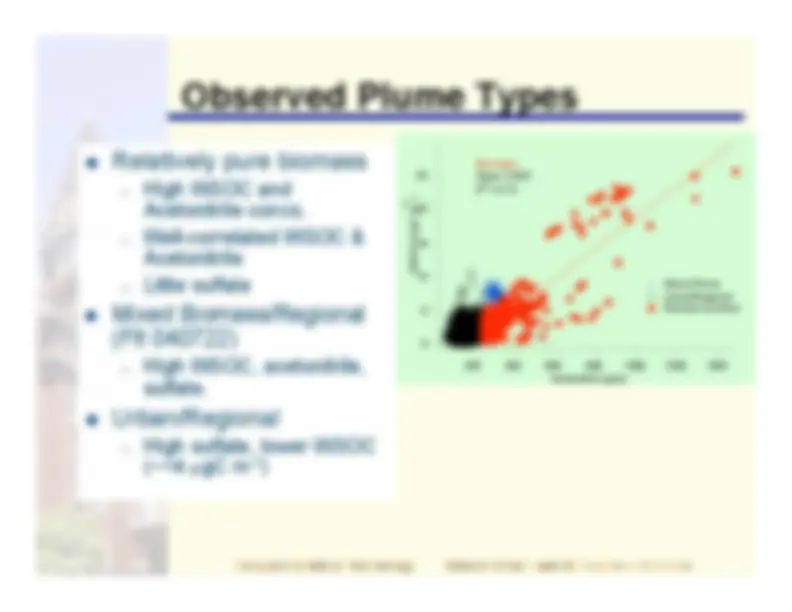
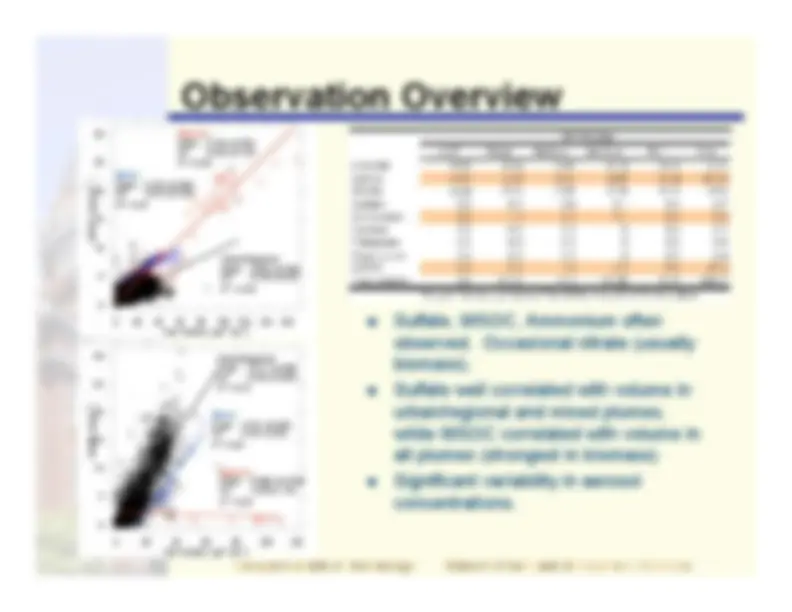
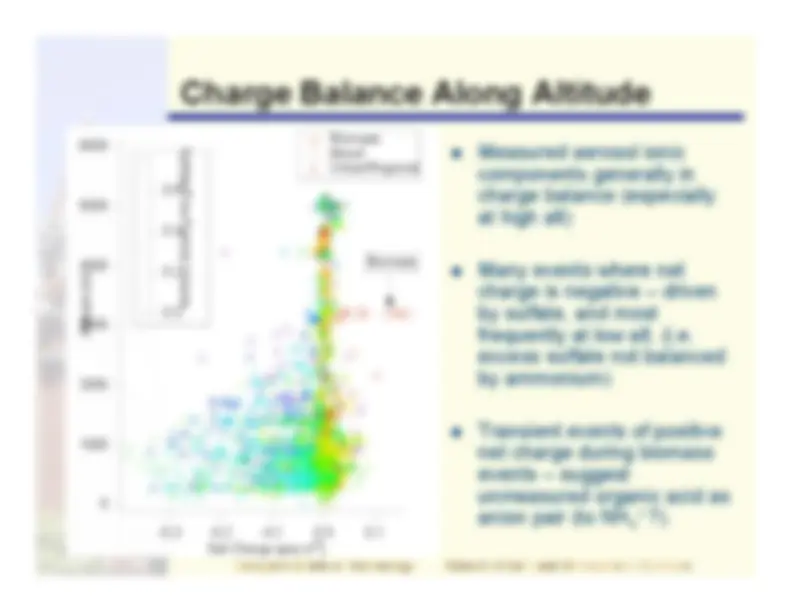
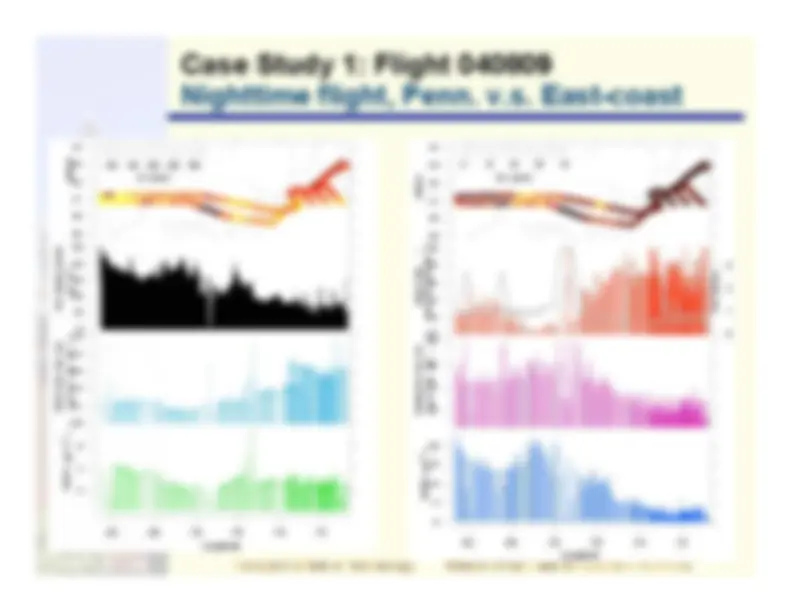
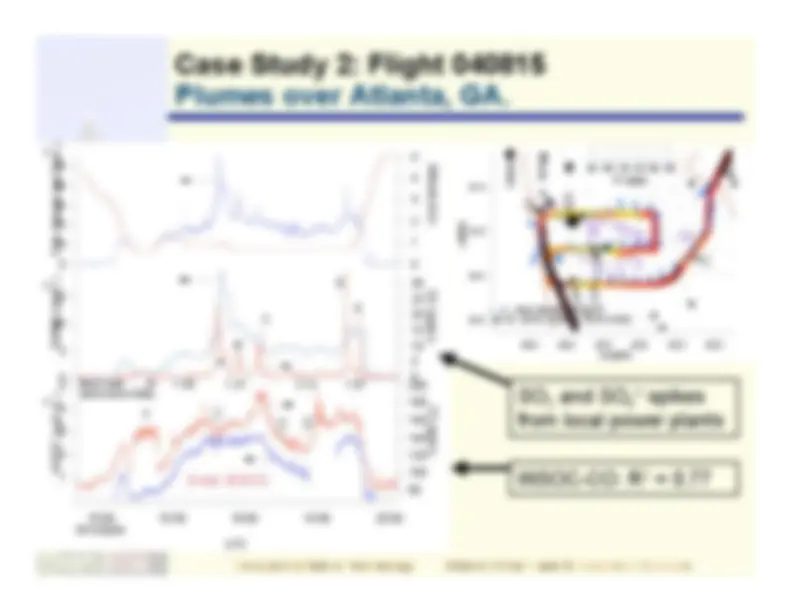
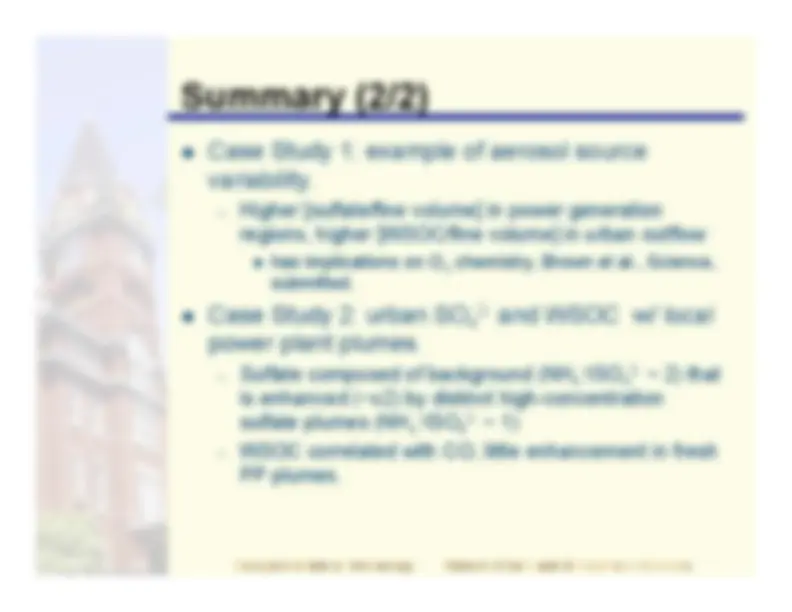


Study with the several resources on Docsity

Earn points by helping other students or get them with a premium plan


Prepare for your exams
Study with the several resources on Docsity

Earn points to download
Earn points by helping other students or get them with a premium plan
Community
Ask the community for help and clear up your study doubts
Discover the best universities in your country according to Docsity users
Free resources
Download our free guides on studying techniques, anxiety management strategies, and thesis advice from Docsity tutors
Georgia Institute of Technology School of Earth and Atmospheric Sciences. Roadmap. A. Measurement overview. Statistics, altitude profile, charge balance.
Typology: Exams
1 / 13

This page cannot be seen from the preview
Don't miss anything!








2
m^ gC m
Fine Volume ( mm^3 cm -3) Biomass Slope: 0.184 ± 0. Int: 0.236 ± 0. R^2 = 0. Mixed Slope: 0.103 ± 0. Int: 3.544 ± 0. R^2 = 0. Urban/Regional Slope: 0.092 ± 0. Int: 0.726 ± 0. R^2 = 0. 30 25 20 15 10 5 0 Sulfate ( m^ g m
Fine Volume ( mm^3 cm-3) Mixed Slope: 0.371 ± 0. Int: -5.457 ± 0. R^2 = 0. Urban/Regional Slope: 0.411 ± 0. Int: -0.522 ± 0. R^2 = 0. Biomass Slope: -0.008 ± 0. Int: 2.220 ± 1. R^2 = 0.
Additional Analysis of Altitude Profile l Species/fine volume median of 500m bins. l Little change in fraction for sulfate and biomass- derived WSOC. l Increase in WSOC/fine volume fraction with altitude.
Charge Balance Along Altitude l Measured aerosol ionic components generally in charge balance (especially at high alt) l Many events where net charge is negative – driven by sulfate, and most frequently at low alt. (i.e. excess sulfate not balanced by ammonium) l Transient events of positive net charge during biomass events – suggest unmeasured organic acid as anion pair (to NH 4
?). 6000 5000 4000 3000 2000 1000 0 Altitude (m) -0.3 -0.2 -0.1 0.0 0. Net Charge (meq m
)
Sulfate/Fine Particle Volume^ Biomass Mixed Urban/Regional Biomass
Case Study 2: Flight 040815 Plumes over Atlanta, GA.
Latitude -85.5 -85.0 -84.5 -84.0 -83.5 -83. Longitude Georgia Alabama 80100120140160180 CO (ppbv) — Wind Direction and Speed SO 2 Source (scaled by '99 emissions)
D E 5 4 3 2 1 WSOC (μgC m
Case Study 2: Flight 040815 Plumes over Atlanta, GA. 5 4 3 2 1 WSOC (μgC m
Latitude -85.5 -85.0 -84.5 -84.0 -83.5 -83. Longitude Georgia Alabama 80100120140160180 CO (ppbv) — Wind Direction and Speed SO 2 Source (scaled by '99 emissions)
2-
2-